Vintage stores embody ‘materialism not consumerism’
During a recent trip to Manchester, I visited a lovely little vintage shop called Bionic Seven. A partner store to Levison's in London, it leans towards more modern and more sports clothing, but has quite a few little gems in amongst the racks.
I didn't buy anything, but I hugely enjoyed the visit. I've been thinking ever since about why, and what it says about vintage in general.
One thought was the incredible range of ideas, designs, styles, and general inspiration there is in the average vintage shop.
If you think a regular store would have multiple sizes, and probably multiple colours, for every one of those pieces of clothing, you start to realise how dense vintage is in terms of style. A normal shop would have to be at least ten times the size to contain it all.
A vintage store will usually have clothes from different periods, from different cultures and for different pursuits.
In its small space Bionic Seven has workwear, military clothing, sports clothing, tailored clothing and outdoor clothing (fishing/walking/hunting); from every decade from the 1950s to 2010s; from Britain, Europe and America.
The cuts vary wildly because of the different eras, and the cultures vary within the same era.
If you were a fashion historian, you could probably pull out a half dozen pieces and show how they’d each influenced each other over the past century, with ideas pinging from a US military supplier to a Japanese seventies manufacturer to a nineties fashion brand.
For example, I tried on an old English chore and a much more recent Carhartt hooded jacket.
Both had been intended for the same kind of labour, but they had very different ideas on both protection from the elements and on ease of movement. They were completely different styles from different times and cultures, but had similar purposes and have both have been adopted into civilian wear since.
Of course, the variety and lack of sizes means shopping at a vintage store can be frustrating. But over time, as with my visit in Manchester, I’ve found it less so.
It helps when you’ve got a core handful of vintage pieces - the ones that are most versatile, that most suit your style and lifestyle, whether that’s an M45 or a pair of old 501s.
But even if there’s something you really want, there is a pleasure in tracking in down over time. I have a list on my phone of things I’m looking for - a great western belt, a perfect pair of fifties chinos - and it would be lovely to find them. But I also don’t mind if I don’t for quite a while.
This is sometimes referred to as the pleasure of the hunt, and there is something in that. But I also find that looking for something is a means to discovering something else - stumbling across a piece you weren’t expecting. I recently bought a pair of Dutch cargo trousers from Worne at a local fair, for example, even though it was a style I didn’t think I liked.
This of course, is a big difference between shopping vintage in person vs online.
Vintage clothing is stimulating. I find the sheer variety, within a store and between stores, forces an open mind.
In an age when so many people see a brand online first, and make a judgment before deciding to go into the store, vintage is the opposite and can be very refreshing as a result.
Also, I think it’s fair to say that many brands today feel similar to each other - whether it’s everyone doing a trainer that looks like those Loro Piana ones, or the fact that every hot new streetwear brand seems to sell mostly plain hoodies and T-shirts.
I also reflected that my brief experience of vintage has furthered my love of clothes as objects.
When you see buttonholes being sewn, or know how shoes are made, it’s not hard to value a piece of clothing for the craft-product it is. With casual, industrially made clothing it can be harder.
Browsing through every piece on a (good) vintage rack forces you to take each piece on its merits. You consider their individual character, why they were designed and made in that specific, deliberate way. You think about how they’ve aged, why the store owner selected them, even their place in our cultural history.
It’s a long way from the social media-driven hype that is how many people buy clothes today. It’s materialism rather than consumerism - even without the sustainability angle.
I’m very new to vintage clothing, and I’m sure most of these reflections will be obvious to those that aren’t. But I also know many readers don’t buy vintage, and they might find them revealing.
More than anything, a good vintage store feels to me like a celebration of clothes, in a way that many high-street shops don’t.
And that has always been one of the biggest things I love about tailors, shirtmakers and shoemakers.
Thank you Darcy for your hospitality in Manchester, and indeed everyone else that has shown me round their shops above with similar enthusiasm - Brut, Hang Up, Crowley, Desii, Hunter and Le Vif.


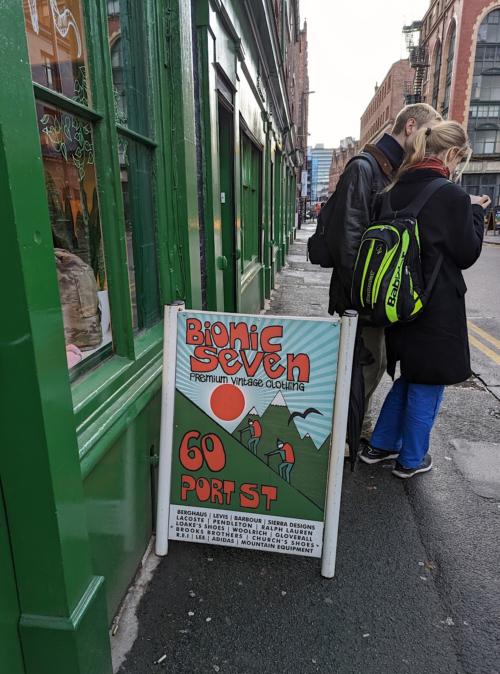
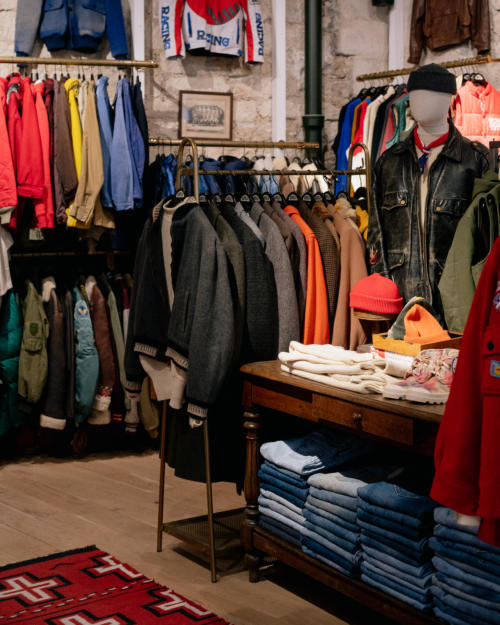
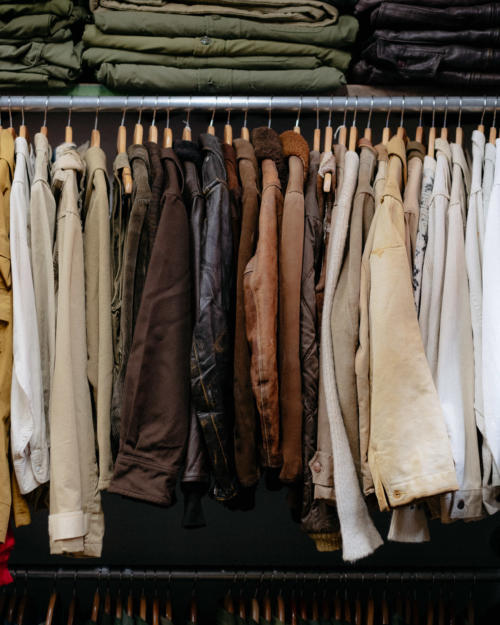
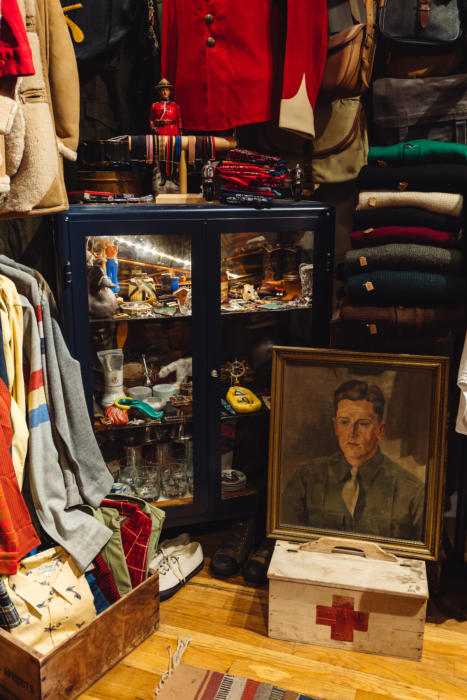
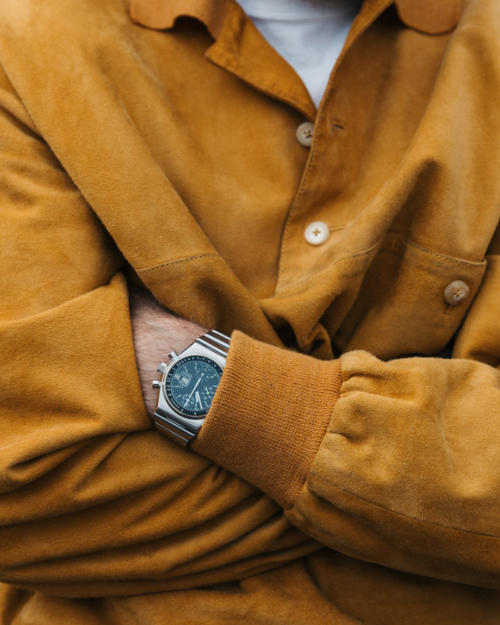
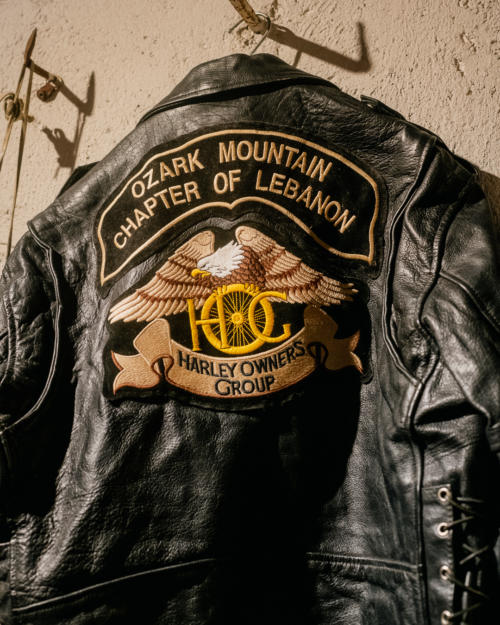
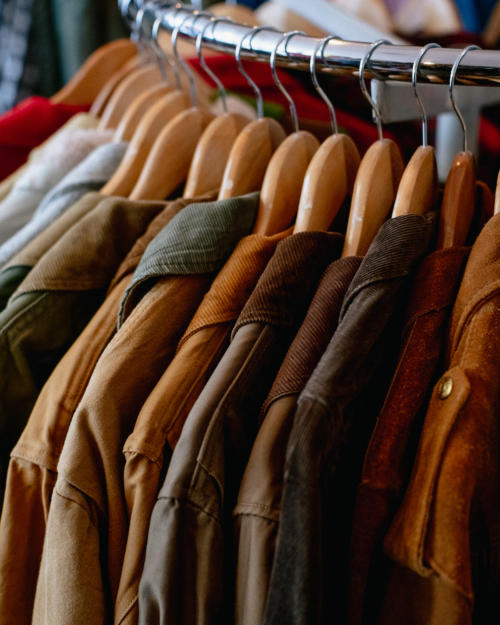


























Most of my prized clothing items are vintage. Among them a 50s horsehide jacket, a pair of 1944 ww2 issued veldtshoen boots. I used to work in a shop in the early 00s called Yellow Submarine in Covent Garden and we would buy bulk from the clothing mills and sort out the grades. In those days it wasn’t unusual to find great Americana from the 50s and 60s but good vintage is far thinner on the ground now. You do need to pay for the top stuff. Levinsons is good along with the much missed vintage showroom.
I remember that shop, pity I wasn’t more into vintage at the time
That must be in the Northern Quarter? What did you make of Manchester? I used to go regularly for work but not been for 10 years now. Oi Palloi I used to drop in to. It’s good to read about your ‘vintage experiences’ and the thrill of the chase to find something you’ll see no one else wearing. I very much enjoyed your thoughts and analysis.
Thanks.
Yes it is, and Manchester was very interesting. We went to see Doherty Evans, Rivet & Hide, Oi Polloi and a few other places. Oi Polloi was impressive and felt like the best summary of the local market – the words of others as well as ours. I.e. it’s very much a sportswear town, and Oi Polloi has the top end of that, whether its Engineered Garments or Beams Plus. Somewhere like Rivet & Hide definitely has its customers there, but they need to be explained to about Japanese denim, loopwheel sweats and so on.
Thanks, I’d forgotten about Rivet and Hide, I must look them up!
Did you have chance to examine any of the knitwear in Oi Polloi? They often have quite unusual designs and colours.
Long been a place for Alan Paine and Armor Lux bargains.
They usually have a very good New Year sale especially for those with an interest in sports or work wear
I looked through a lot of things, but no specific recollections of knitwear pieces. That range in price and in style (v trad to v modern) was impressive though
Since your visit, Oi Polloi has sadly closed it’s doors. This is due to it being owned by JD sports and them wanting to cut down the amount of off-branches they have. A real shame as this was one of the few shops in Manchester that was worth visiting.
Thanks Liam. Yes, I heard and actually we have a nice article on that coming out soon
Love it when they have a webshop with nothing on it ?
Yeah, but the hours and expense it takes to measure, photograph and list every unique garment is immense. Most of these places are small operations. But it forces us to shop locally, which isn’t so bad. 🙂
Agreed, but if thats the case – dont have a web shop. whats the point in having one with nothing on it? Also, being forced to shop locally is fine if you live local to good shops. If not it means your forced to travel, which isnt so good. 🙁
Very true …
The best way to develop a ‘Vintage’ wardrobe is to curate it from your own new purchases.
Of course, this will only happen if you avoid the vagaries of fashion and stay true to a real ‘Permanent Style’ ethos.
Much of my capsule wardrobe is now over twenty years old so, I suppose, qualifies as ‘Vintage’ and more recent purchases, my V1 PS Trench (2017) and V1 PS Donegal Tweed (2019) are wearing well and if I live long enough will earn their vintage tag.
This is the sustainable way to do it and you avoid wearing somebody else’s cast offs.
That is admirable David, and it is certainly better than a lot of modern vintage. It doesn’t really help if you want things that were made before you were born though
totally… sometimes I want to clear the wardrobe and throw out stuff, only to remind myself, in two weeks, I will be hunting something from a vintage shop!
iMy lad bought a Dickies Duck coat from there. I remember they had a good selection of leather jackets.
Sadly most of the old shops in the NQ now seem to cater for the spillover from Aflecks Palace.
Regarding western belts, I have focused myself in finding good vintage sterling buckle sets.
Then I take them to a local leather artisan, who makes for me the made to measure belts.
Wonderful. Where do you tend to source the vintage buckles?
Mainly, in auction and second hand web sites like eBay, Todocoleccion, Wallapop…
They are my hunting ground 😉
Cheers
Cheers, Simon.
Slightly off topic:
Maybe you could write someday about the silver tuareg craftmanship, specially its jewellery for men, in the way you wrote some months ago about north american indian silver crafts.
(Hermes uses touareg art for its top quality H buckles in solid silver, but there is much more, and not so high priced)
Hi Fran,
That’s a lovely idea. Do you know much about it yourself? Is there anywhere you’d recommend I look for research?
It’s a shame you didn’t make it to Alfargo’s Marketplace when you were in New York City!
Yes, the guys all came to our pop-up party, which was lovely, but we didn’t quite have time to get to the marketplace that Sunday unfortunately.
Hi Simon, I enjoy your articles and readers’ comments immensely. I am one of your older readers, entering into my 8th decade. Over 60 years, I have collected, apparel, hats, shoes, accessories, many of which I still wear after renovations or re-fittings. Most of these clothes would be considered “vintage” by the majority of your readers. Some, like the Willis & Geiger brand, are no longer even available. One of my main reasons for following your comments and recommendations is to understand how I can make these wonderful items conform to the contemporary evolution towards casual, more informal trends discussed in your writings. As I find I seldom buy any new clothes, I gather as many ideas from your images as possible so I can re-purpose my older clothing into “looks” that are more current – and more permanent. (Sometimes, I just say the heck with it, and dress as I did in the 60’s. I have for example, a beautiful donegal tweed three-piece suit that still fits and looks good with a pocket watch and chain. Being older, I find I can get by with things that would be “costumey” on younger men like yourself.) I would like you to sometime profile an older man – in his 60-70’s – who has the same dilemma – how to repurpose a life’s worth of bespoke or quality brands into the kind of style you advocate for today’s world. “Permanent style” as a title, has that implication behind its meaning. Thank you for your thoughts
Jack WIlliams
Hi Jack,
Thank you very much for taking the time to write and let me know how the site works best for you. I’ll certainly give it some thought, and see if a future profile could help in that regard. In the meantime, I’d take solace from the fact that a lot of younger guys will be jealous that you can get away with so much!
As an older reader (older than Jack Williams!) I would very much encourage you to write a piece on repurposing older, quality brands from our wardrobes as he suggests. It might even be useful to your younger readers who might gain an interest in building a future vintage wardrobe from today’s styles.
Thank you Louis
This is a wonderful suggestion! I wonder in that sense the longevity of bespoke tailoring and how long one can keep wearing them without being anachronistic. And what might be the best types of garments to focus on to avoid this.
Cheers and I do hope you consider an article on wardrobe management over the long term while keeping in style.
Hi Simon,
Whilst I am not personally a fan of vintage /second hand, I did find this an interesting and informative article. Much of what you say about appreciating clothing skaldic can holds true with new clothing which in some cases will be tomorrows vintage.
I’d urge other readers to the follow the link in the article for ‘materialism rather than consumerism’. In my opinion both articles provide an interesting perspective and are good journalism in the way they gently challenge one’s thinking. I particularly found the part about the ‘high’ we get from a purchase interesting and I have to admit it did resonate.
Thanks again for your insight and all the best for 2023.
That’s lovely to hear Stephen, and I’m very pleased it led you into a previous article that stimulated some new thoughts
Thanks Simon. BTW not sure how I managed to put ‘skaldic’ in there, which is a form of old Nordic verse (I had to look it up), the dangers of predictive text!
Seems like no new post went online or is it just me?
Try refreshing John?
That didn’t work back then, but I see it now 🙂
Thank you
Oh good, thanks for letting me know though John
I’m an avid PS reader who lives in Manchester. I like to think I know the local menswear scene (such as it is). But I must confess I hadn’t heard about Bionic Seven. I will go and have a look now that I do – for which many thanks! Other than that, you’ve noted in the comments all the places I would direct anyone to in the city centre. In particular, you say that Oi Polloi is the best summary of the Manchester look and that it is, in general, a “sportswear town”. Both true, in my view. (Doherty, Evans and Stott has been attempting to introduce the city to a smarter, Neapolitan-infused kind of aesthetic and Rivet and Hide to proper denim). The only thing you didn’t mention – perhaps because you cover them elsewhere and through the collaborations – is the Private White factory shop which is a 15 minute walk across town from the Northern Quarter (reopening on 6th Jan). PWVC makes much of its Manchester/Salford heritage, but is oddly hard to get hold of in the city. Only in the factory shop is there a decent range of PWVC products, but it’s out of the way and appointments only. The main reflection, though, is how few notable, visit-worthy outlets Manchester has for its size. Another reason to sort out the trains to London….Oh, and Stitches, just off Deansgate, is the best I’ve found for repairs and alterations.
Thanks SAO, yes we were at Private White the next day, I just didn’t think of it as a shop in that way
You should consider adding a tab/sort for the comments that in addition to oldest/newest, that is ‘recommended’, the comment that is most commented on or the most lively discussion.
Thanks Will. To be honest we did look at that with the mini-redesign, and it seemed that too often those comments were ones that were off topics, or where two people just got into a separate conversation. I’m not sure those conversations are usually the most useful or interesting comments either.
Do you find you miss an interesting conversation lower down the comment stream?
I had completely missed that earlier article of yours but it’s a point that I have frequently struggled to make to people, and it’s great to see it being brought up again. And thank you for the lovely invocation of the joy of vintage stores. They are museums of a kind.
About the other point — I’m not a philosopher or semiotician in academia but exactly as you said there seems to be a disconnect between what materialism could actually mean and how people tend to use it now. It has somehow mixed with notions of frugality to the point where having investments worth of a million in S&P 500 and buying the cheapest possible clothes is seen as less materialistic than someone ordering a pair of Saint Crispin’s.
I understand why people feel that way but ultimately I believe that taken critically materialism in that sense is a pursuit of wealth. Money in the banks or stock market does not sit idle. It’s this money that also clears rainforests and drives income inequality. Pursuing craftsmanship and taking indulgent care of it is the exact opposite of that. As you said it, perhaps better called consumerism, which is about buying things and endlessly replacing them as you never cared for them from the beginning. In that sense, I think the oft-hallowed utilitarianism can also be a dangerous thing.
Materialism as I see it, and as many cultures saw it in the past is a reverence for the material nature of things and the human ingenuity and skill of generations that have gone into crafting that piece of tailoring that we seldom think twice before putting on. It’s an embodiment of everything that makes us human. Seeing it from a consumerist lens is like looking at a Cézanne and seeing only paint and canvas.
Certainly its more satisfying buying something of quality and not only being able to continue wearing it over the years. But their is a particular satisfaction in watching items age/change over time as they define and make statements about your taste and individual sense of style. I have a pair of RMW boots the Mrs bought me thirty years ago. They have been resoled twice and the side elastic replaced after sixteen years, but with the right care they should continue onwards. Enduring material objects attain a narrative patina which is reflective of your life and times.
Sad news,but it appears we are to lose the Manchester branch of Oi Polloi.
https://themanc.com/news/beloved-northern-quarter-streetwear-store-oi-polloi-expected-to-close-its-doors/
I heard, that’s such a shame. We need to support independent retail stores more than ever
Slightly better news about Oi Polloi.It is returning .
https://www.drapersonline.com/news/manchester-indie-oi-polloi-plots-phoenix-from-the-ashes-return
Thank you. Article coming on this actually!